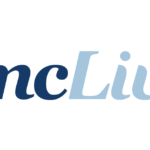This post is part of a series sponsored by PCF Insurance Services.
Matt Barber of PCF Construction offers a guide to the two types of commercial construction insurance and when each is best suited.
In the construction industry, navigating the diverse gamut of insurance programs can feel as complicated as coordinating the large-scale project itself. With so many policies, regulations and terminology to decipher, making the right choice for your construction project is crucial. It can be the difference between a well-protected, smoothly running operation and a storm of liabilities, unexpected costs and time delays.
Both the Owner-Controlled Insurance Program (OCIP) and the Contractor-Controlled Insurance Program (CCIP) are insurance programs that provide uniform, integrated coverage for the various risks associated with large construction projects. However, their structures differ in important ways that affect the management of risks, costs, and liability. The choice between an OCIP and a CCIP often depends on the details of a particular project and stakeholder preferences, but understanding the basics of each program is an invaluable asset.
Understanding Insurance in the Construction Industry
Insurance acts as a hedge against uncertainty, protecting investments, workers and the public. But the problem is not just about having insurance, it’s about having the right kind of insurance.
The role and importance of insurance in construction
Insurance in the construction industry plays several important roles:
- Risk ManagementConstruction projects involve a variety of risks, from worker injuries to property damage, delays due to unforeseen circumstances to litigation. Insurance helps manage these risks by providing financial compensation and ensuring the continuity of the project.
- Compliance with Laws and RegulationsMany jurisdictions require certain types of insurance as a legal prerequisite for construction work. Compliance with these regulations is not only necessary for legal operation, but also contributes to industry standards and safety criteria.
- Financial StabilityInsurance policies can protect your construction project from catastrophic financial losses. Insurance policies provide a safety net that allows you to continue operating even if an unforeseen event occurs.
- Building trust: Strong insurance coverage fosters trust among project owners, contractors, investors and stakeholders. Demonstrating a proactive approach to risk management makes projects more reliable and secure.
A quick guide to choosing the right construction insurance
Choosing between an Owner-Controlled Insurance Program (OCIP) and a Contractor-Controlled Insurance Program (CCIP) can be difficult. Both policies have transformed risk management in the construction industry, but each has its own advantages and disadvantages. This guide provides a concise overview to help you make an informed decision for your project.
OCIP vs CCIP: Comparison Chart
OCIP (Owner-Controlled Insurance Program)
- Administrator: Project owner
- Strong Points:
- Comprehensive and uniform coverage
- Potential Cost Savings
- Greater control for owners
- Cons:
- Administrative burden
- Risk of cost overruns
- Best for: Large, complex projects where owners want more control
CCIP (Contractor Control Insurance Program)
- Administrator: Contractor
- Strong Points:
- Simplify insurance management for owners
- Potential cost efficiencies
- Empowering contractors to manage risk
- Cons:
- Less control for the owner
- This may lead to higher bids
- Best for: Projects where contractors have a track record of good safety and risk management.
Factors to consider when making a selection
- Project Scale: OCIP often benefits larger projects due to potential cost savings. For smaller projects, the administrative burden may outweigh the benefits.
- Project Types: Environmental risks? OCIP offers more comprehensive coverage. Are you a contractor skilled at managing CCIP? Choose CCIP for convenience.
- Risk ProfileUnderstand the risks of the project. If the owner is good at risk management, an OCIP may be a good fit. If not, consider a CCIP.
- Management Features: Ensure you have the resources to effectively manage your insurance choices.
- Control Settings: Want more control? Choose OCIP. Are you OK with less control? Choose CCIP.
Balancing stakeholder perspectives
Both the owner’s and contractor’s perspectives are important. The owner may prefer the control and coverage of an OCIP, while the contractor may prefer a CCIP to effectively manage risk. It is important to consider all perspectives to make a balanced choice.
Building self-confidence: final thoughts
Understanding the complexities of OCIPs and CCIPs can make a big difference. Both insurance types offer unique benefits, from comprehensive coverage and administration with an OCIP to simplified administration and cost efficiency with a CCIP. But there are also potential drawbacks that need to be carefully considered.
The decision between OCIP and CCIP should be based on project characteristics such as size, type, risk profile, available management resources, management preferences, etc. It is also important to balance both the owner’s and contractor’s perspectives to ensure project success.
At PCF Construction, we have a team of industry leaders standing by you to help you find the best solution for your project needs. Feel free to contact us and let’s build trust together. Construction company For more information, please click here.
topic
construction
Interested in construction?
Get automated alerts on this topic.






